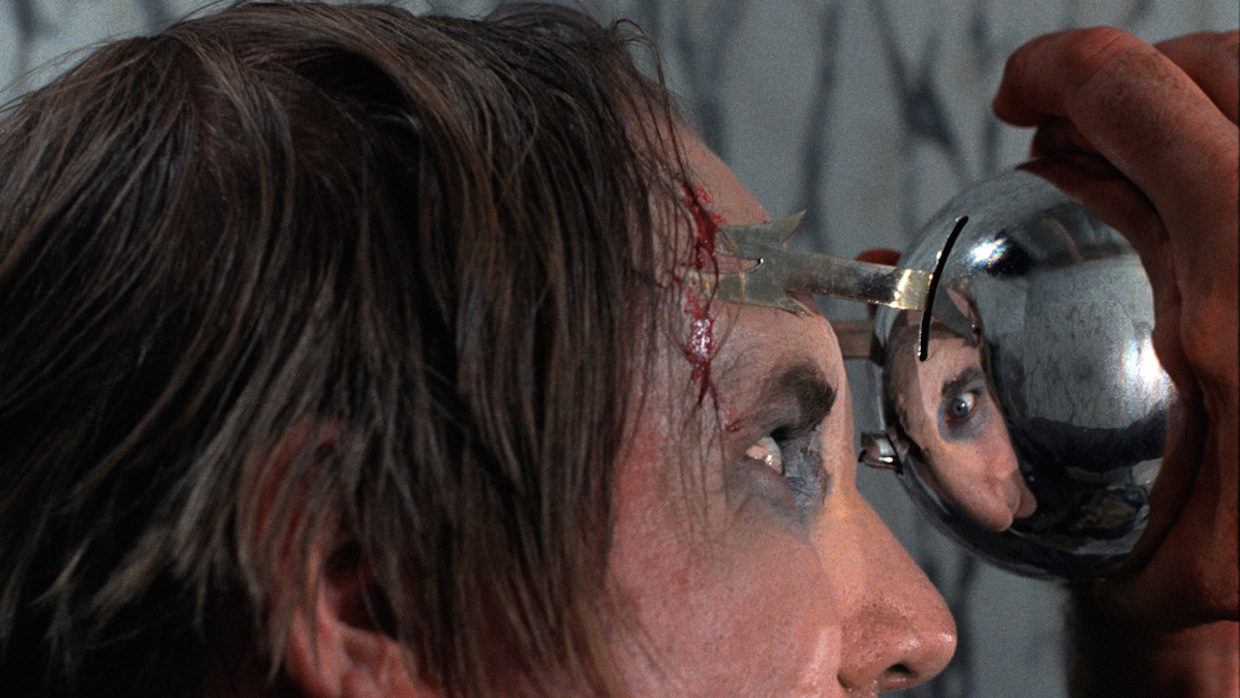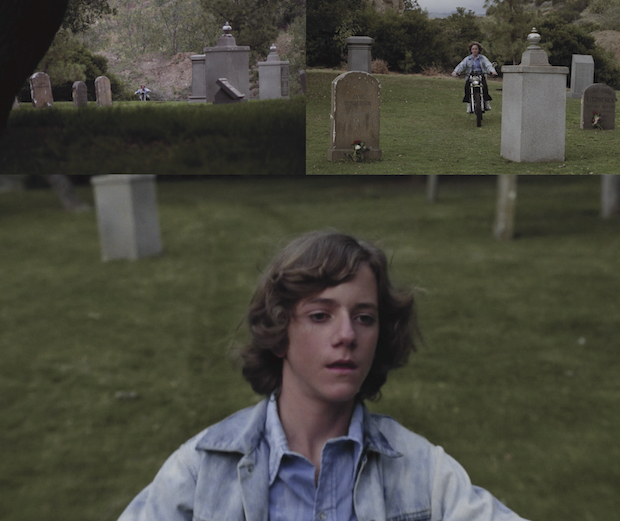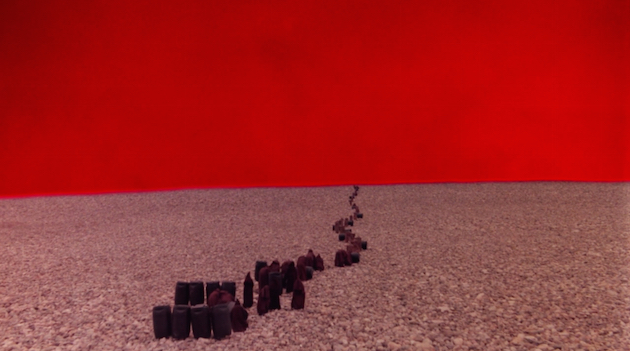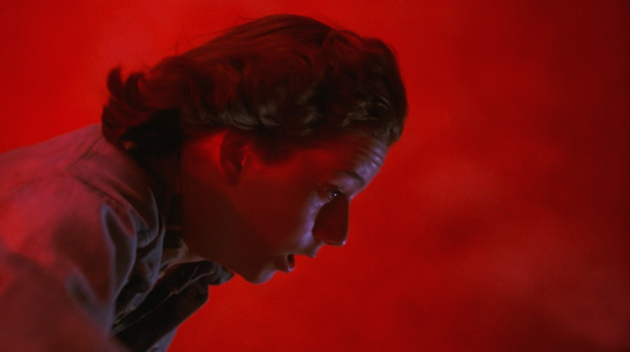 Back to selection
Back to selection
Shutter Angles
Conversations with DPs, directors and below-the-line crew by Matt Mulcahey
“Student Filmmaking at its Finest”: Don Coscarelli on Phantasm
 Phantasm
Phantasm The first filmmaker I ever interviewed was Don Coscarelli.
It was 1998 and I was a junior in college, toiling away at the University of Kentucky student newspaper. Coscarelli agreed to chat about his career for the paper’s Halloween movie page and, clueless as to proper interview decorum — or what might be an appropriate amount of time to monopolize — I asked him about every movie he had ever made. Every. Single. Movie. It was a Frost-Nixon length tête-à-tête, but he was nice enough to humor me.
Two decades later — and on the eve of another Halloween — I had the chance to speak with the Beastmaster and Bubba Ho-Tep filmmaker again. This time we stuck to the new 4K restoration of Phantasm, the 1979 cult horror film directed, shot, and edited by Coscarelli when he was just 23 years old. Check out Phantasm: Remastered now on Blu-Ray, VOD, and in select theaters and read onward to hear Coscarelli spin Tall Man tales about using pickup trucks for dollies, transporting child extras in a prop hearse, and the failed Panaglide shot originally intended to close out the film.
Filmmaker: Your father was in the investment business and he put some money into your first two films, Kenny & Company and Jim, the World’s Greatest. He put some into Phantasm as well. Where did the rest of Phantasm’s $300,000 budget come from? Was it dentists and lawyers looking for tax write-offs?
Coscarelli: I don’t know if they were necessarily dentists and lawyers, but there were certainly some nice individuals who staked us at the beginning. I remember some of them wanted to get out after a while, so it got a little rocky in spots, but my father being in the investment business was certainly a huge help to my career.
Filmmaker: What were the biggest line items on Phantasm? Gear rental and buying and processing film?
Coscarelli: I think that was it. It certainly didn’t go to the actors and it certainly didn’t go to the crew. It was the technical costs of the equipment rental and film stock and lab costs. A lot also went to food because when you’re not paying people you better feed them well. (laughs) The great part was that when the film was successful we immediately wrote checks to all the crew (who had worked for deferred payment), which was like a Cinderella story. I still have good friends who worked on the film who tell me about all the times they worked for deferred payment and Phantasm was the only one that ever paid them off.
We really spent where it counts and it now shows with this restoration. Myself and my co-producer Paul Pepperman went over to Panavision and there was a nice gentleman there who was friendly to independent filmmakers. He gave us an entire Panaflex camera rig and lenses for pretty much the duration of the shoot for a very reasonable price. That’s now paying off with the 4K scan of the original negative. We were capturing a very high-quality image that we are now finally able to fully exploit.
In terms of other costs, we spent on effects, we paid Will Green, the guy who created the silver sphere, $1,000, which was a huge amount of money back then for our budget. Then we had to buy the cars — the black Plymouth muscle car and the hearse.
Filmmaker: Did you just have the one hearse? I wondered if you had a duplicate or if you blew up the hero car at the end of the shoot.
Coscarelli: Truthfully, the (car that explodes) was not a hearse. It was very hard to go out and find doubles of a 1960s white hearse. (So to match the hero hearse) we got one of those old school ambulances — like the Ghostbusters car — that wasn’t running. We took all the ambulance stuff off, cut the roof off and put a fake plywood roof on it and then we blew it up.
Filmmaker: There’s only two shots of that explosion — the wide and then a tighter of it already on fire. Did you just have the one camera, even for stunts and effects?
Coscarelli: That’s a really good question. I’m not sure as a filmmaker I was sophisticated enough yet to know that on major stunts you absolutely needed to get a second camera. I’m trying to think if we ever did use a second camera on anything and I’m going to say that we didn’t. I think it was a single camera show even for the big production explosion.
Filmmaker: There’s some behind-the-scenes footage on the Anchor Bay DVD release of an alternate ending with the character of Mike (played by A. Michael Baldwin) at a cemetery and you’re rocking some sort of Steadicam-like rig. Was that actually a Panaglide since you got gear from Panavision?
Coscarelli: Yeah, I got this Panaglide for Phantasm and I could not master that thing. (laughs) It was originally a really elaborate shot. A piece of it stays in the movie and that piece was the best part of it. It started on the boy and kind of glided around him and then showed a grave over his shoulder. That part of it worked really well, but then once I had to walk backwards I was on uneven terrain because there were all these grave markers. It was supposed to be the final shot of the movie and we actually rented a Condor crane that I stepped onto (at the end of the shot) and it went like 40 feet in the air. It was very elaborate and ambitious, but it was so damn shaky and bumpy. It could’ve been a great shot. (laughs)
Filmmaker: How many takes did you do before you threw in the towel?
Coscarelli: That’s exactly what happened — we just threw up our hands. We probably did 20 or 25 takes and keep in mind (laughs) that each take probably ran through a 400-foot load of film, which cost something like $700. Every one of them sucked except for maybe one. And by something like take number 24 it was just like, “Forget it. Let’s go home.” And for a movie like that to spend an entire day out there and get the Condor lift and get all the actors for the funeral and shoot all that stock and then just abandon it, that was a big setback for the movie.
Filmmaker: Revisiting the film again, I was very impressed by the mausoleum set.
Coscarelli: That was another place where we spent money. We knew we were going to have a lot of scenes in that mausoleum. There was a gorgeous mausoleum in my hometown but there was just no way we were going to get in that place and shoot off shotguns and splatter blood on the walls. So we just decided to build it. We rented this small warehouse and we got these three guys who were like the art crew. I remember Paul Pepperman was so frustrated because every week we’d get these requests from them — “We need more lumber” — but they built that thing solid. You could climb up on the walls. It was great. You could put like a 2K junior, a heavy light, up on the wall. It was not like a set flat. Those guys had regular construction backgrounds. Then my mother, I guess she was the production designer, she had found this contact paper that had a marble texture that people could use for lining drawers or whatever and we bought cases of that stuff. So they built the mausoleum out of plywood and 2x4s, then went in and laid the contact paper over it and it looked just great.
Filmmaker: I love that your mom is credited under a bunch of pseudonyms for all the different jobs she did on the movie, which includes wardrobe and makeup.
Coscarelli: We decided to do that because it would look too ridiculous otherwise. There were already too many Coscarellis in the credits as it is. (laughs)
Filmmaker: When the movie came out in 1979 had the post-Jaws template of large platform releases kicked in yet or did a movie like Phantasm still open regionally and then expand?
Coscarelli: First off it was a terrific struggle (to sell the movie). We finished Phantasm and we started to show it around. It was much easier back then to get acquisitions people in the studio to watch movies because there weren’t as many independent films. It was harder to make them with shooting on film and all of the technical side of things, but we got executives at every major studio to watch Phantasm and we got passes from every one of them. (laughs) Paul Pepperman had actually delivered the film for a screening for an executive at, I think, Warner Brothers and Paul would always hang out in the projection room to see if he could get any idea if (the studio people) liked the movie or not. And one minute before the sphere scene — you know, the best scene in Phantasm — Paul sees the (exec) getting ready to leave. Paul ran down and told him, “You’ve got to watch this scene. Just stay two more minutes.” The guy stayed and watched it — and then he still left afterward.
Luckily we found a distributor in Avco Embassy, which was a small company that was sort of on the ropes but they were eager and entrepreneurial and they were willing to take the movie out. At that time they were not releasing nationally, so it was a regional release. They made 500 prints of the movie and then they went into I think the Southwest first, then the Southeast and then the Northwest. It didn’t get to the New York area until four or five months later. But that worked great because they would send Angus Scrimm and I out to the different regions and have us do all kinds of local promotion. Angus would wear his costume and make-up and we’d be on these morning shows and Angus would be glaring into the camera with his arched eyebrows at like 7 a.m.
Filmmaker: The genesis of the film’s 4K restoration is that J.J. Abrams wanted to screen Phantasm at his company Bad Robot only to find out that all the prints were in bad shape. What condition was the original camera negative in?
Coscarelli: For a long time the negative was just in a regular lab vault and god knows how the temperature and humidity control was in there. But 15 or 20 years ago I heard about this new vault that Kodak had started called Pro-Tek and I got the original camera negative stored over there.
The raw stock from Kodak was so expensive when we made Phantasm that there was this system where you could buy leftover film called re-cans or short-ends. A major television series might buy 500,000 feet of film and they’d have 30,000 or 40,000 feet left over at the end of the season and they’d sell it to these brokers. Some of it was full rolls and some of it was half a roll that somebody put back in the can. But the bottom line was that it was cheap. Sometimes it was great, but then sometimes you would get some really fried negative that might’ve been in the trunk of some assistant cameraman’s car for a week or a month. You’d get these funky colors and crazy grain. So there are shots in Phantasm that every time I’ve been involved in any type of transfer through the years, we’d spend an hour on the same shot because the negative is so damaged. Bad Robot was able to get us a sweetheart deal over at FotoKem and they did this magnificent scan on their highest end laser scanner and then we’d go through those (damaged) shots and sometimes (the technicians) would spend a couple of hours on just getting one terrible (piece of) negative back in shape.
Filmmaker: There’s a saying that art isn’t finished, it’s abandoned, but with films you seem to get to un-abandon the work every few years when a new format comes along. What did you tweak this time around?
Coscarelli: I’d read the criticism of movies being (digitally) altered too much, obviously with George Lucas getting the worst press, so we wanted to make sure not to cross those boundaries. One of the joys for me anytime we’re doing a (new version) is slightly repositioning shots. When we were shooting Phantasm a lot of the time I never got the exact framing I wanted. There was a lot of run-and-gun shooting and sometimes there would be a critical close-up of (A. Michael Baldwin) where he had several extra inches of headroom. With film you had no choice — you just had to use the shot, especially if it was the best acting. Here I could edge it down a little and center it and those kinds of things. One shot I very subtlety added a slight bit of camera movement — the slightest push-in. Very subtle things I don’t think anyone ever notices.
Then in terms of grain reduction it was a great lesson because you find, especially in our movie, that all the grain is in the blue layer. So these guys can focus right on that layer and it’s amazing what they can do in removing grain. They can make it look so clear and it looks so good, but then you realize that it really doesn’t look like the film we made. So we did a little grain reduction, but never went crazy with it.
The best thing was with all of our effects — which were done with paperclips, tape, and a lot of fishing line to get the sphere to fly around — we were able to go in and do wire removal and take all of that fishing line out. The fans have been so charitable over the years and not complained about it much. [Click on all photos below to expand.]
Filmmaker: There are a couple of shots I want to ask you about that I wondered how you pulled off when I re-watched the film. The first one (the bottom image in the trio of shots above) is a handheld shot from what appears to be the handlebars of the boy’s motorcycle as he rides through the cemetery.
Coscarelli: I can tell you exactly how we did that. One of the great tools we used, which you probably don’t need as much now because cameras are so much smaller, was a little import pickup truck that we always used as a dolly. If you let a little air out of the tires and you were on pavement, three or four people could (push the truck) and it was a really solid way to move your camera around. For that shot we put the boy in the bed of the pickup truck and had him sit on an apple box and pretend like he was riding a motorcycle and then we just handheld the camera in the bed to get that close-up shot.
To my recollection I did maybe 90 percent of the camera operating, but there was an over-the-shoulder shot of the boy riding the motorcycle that I turned over to Paul Pepperman because he was more of a stunts guy. So he was riding around on the back of this motorcycle with this big Panaflex rig. If the Panavision guys had seen where we put those cameras (laughs). Every time we returned the camera we’d have to clean it really well so they wouldn’t know how we abused it.
Filmmaker: The next is a shot on the other side of the spacegate, where we see all the little hooded dwarfs. I’ve read that the dwarfs were mostly played by kids. Where did you round up all these kids to be in this horror movie?
Coscarelli: That was shot at this amazing location, which was the side of a dam. One of my collaborators on the movie, who was pretty much the gaffer and did all the lighting, was a guy named Roberto Quezada. Roberto had been doing location scouting and he found that dam. He had this super wide angle Polaroid camera and somebody took a picture of him standing on the side of the dam with the wide angle lens and the way it made it recede with the wide angle, that was the shot we wanted. So we were trying to emulate that location scout photo that he had taken.
As far as the kids, our art director David Brown was involved in some type of youth program and he got about 15 kids (to be in the movie). He actually took the hearse to pick them up and they all got in the back of the hearse and he drove them out to the location. (laughs) We put them in the costumes and I had this idea of having a line of them going to infinity so we put about 10 kids in the foreground and they had some business with those barrels. Keep in mind that the kids had to climb up this wall of the dam, because it wasn’t flat even though the wide angle lens made it look flat. And then we made a bunch of fake dwarf creatures out of wire frames and we had maybe 20 or 30 that we could just drape material on and then every fifth one we’d put a real kid to put a little movement in.
Filmmaker: Lastly, in that same sequence, there’s a shot of Mike falling through the spacegate. I read in an old Fangoria article that you pulled that off by having the kid jump on a trampoline and then over-cranking the camera. I only got to work on one 35mm show that used a high speed camera, but the thing was so heavy that two of us had to carry it with poles like the Ark of the Covenant.
Coscarelli: The crazy thing about the medium is that from the time it was created until we shot Phantasm in the 1970s, the technology didn’t change that much. Some of those really old studio cameras were still being rented. I think ours was a Mitchell and it really did take two guys to carry and when you shot at 100 frames per second it sounded like a Ferrari in fifth gear. One time a sprocket broke and like 300 feet of film got jammed into the gate. It was a crazy thing to do, but it did give us this weird effect when (Mike) popped into frame. It was basically student filmmaking at its finest — really ambitious, not knowing what the hell we were doing, and luckily we got some cool shots out of it.
Matt Mulcahey writes about film on his blog Deep Fried Movies.



